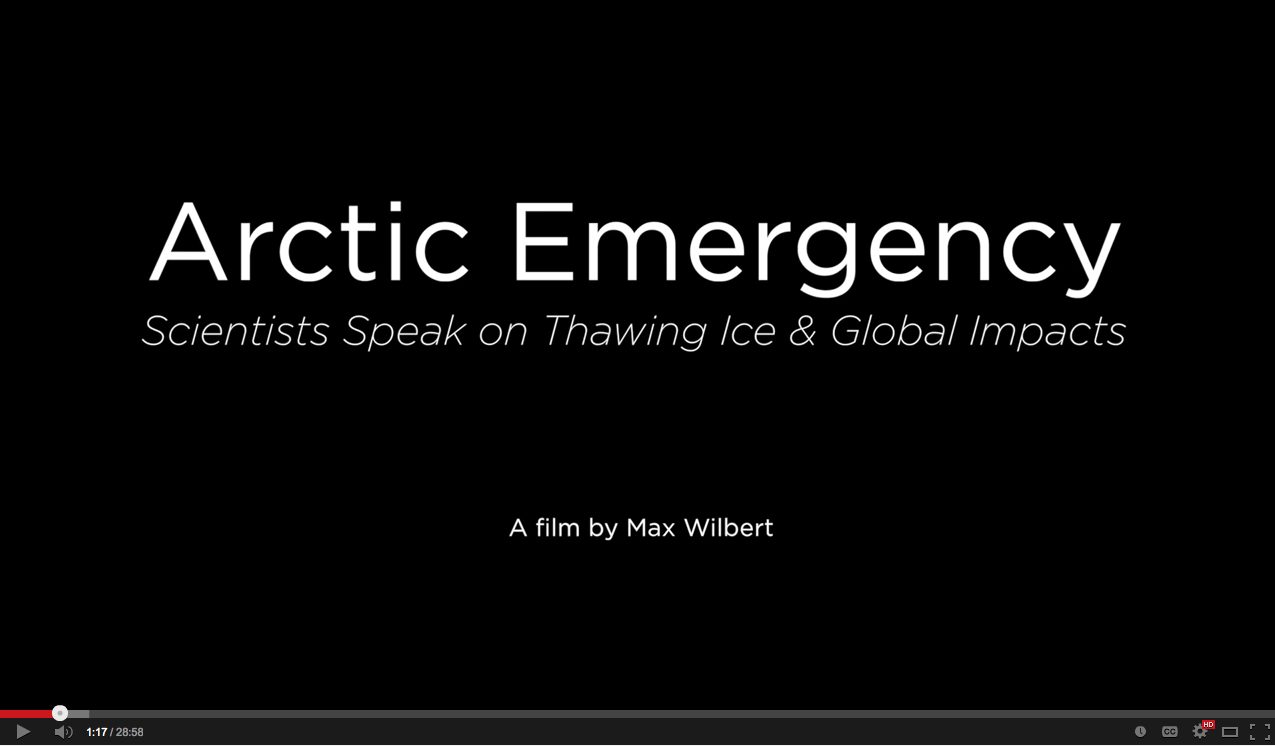This film, by DGR member Max Wilbert, brings you the voices of climate scientists – in their own words.
Rising temperatures in the Arctic are contributing the melting sea ice, thawing permafrost, and destabilization of a system that has been called “Earth’s Air Conditioner”. Global warming is here and is impacting weather patterns, natural systems, and human life around the world – and the Arctic is central to these impacts.
Scientists featured in the film include:
- Jennifer Francis, PhD. Atmospheric Sciences
Institute of Marine and Coastal Sciences, Rutgers University. - Ron Prinn, PhD. Chemistry
TEPCO Professor of Atmospheric Science, Massachusetts Institute of Technology. - Natalia Shakhova, PhD. Marine Geology
International Arctic Research Center, University of Alaska-Fairbanks. - Kevin Schaefer, PhD.
Research Scientist, National Snow and Ice Data Center. - Stephen J. Vavrus, PhD. Atmospheric Sciences
Center for Climatic Research, University of Wisconsin-Madison - Nikita Zimov, Northeast Science Station, Russian Academy of Sciences.
- Jorien Vonk, PhD. Applied Environmental Sciences
Faculty of Geosciences, Utrecht University - Jeff Masters, PhD. Meteorology
Director, Weather Underground
Credit Addendums
- At 16:15, the footage of methane venting from the seafloor was captured by Ocean Networks Canada / CSSF. It is venting from a place called “Bubbly Gulch” near one of their seafloor observatory nodes called Clayoquot Slope (a.k.a. ODP 889), located off the coast of Vancouver Island, not Oregon. The footage was captured in May 2010 at a depth of 1257 m.
https://www.youtube.com/watch?v=sEHFit_5l-Y


Excellent overview of the introductory science of climate change and impacts on the Arctic along with an update of the latest understanding of what’s happening and the very serious risks of adding more CO2 into the atmosphere.
Highly recommend.
Here’s some context based on new study:
We Have Five Years to Stop Building Coal Plants and Gas-Powered Cars http://motherboard.vice.com/read/the-carbon-age-needs-to-end-in-2018
Here’s the frightening implication of a landmark study on carbon emissions: By 2018, no new cars, homes, schools, factories, or electrical power plants should be built anywhere in the world, ever again, unless they’re either replacements for old ones or carbon neutral. Otherwise greenhouse gas emissions will push global warming past 2˚C of temperature rise worldwide, threatening the survival of many people currently living on the planet.
….
Green technology tends to save more money in the long run, dsitepe being more expensive to begin with for example, motion-sensing light fixtures that only turn on when someone walks into a room are more expensive than regular lights, but after a few years the reduced power usage saves money. What examples of green energy are you looking at that are so cost-inefficient? Around here (Midwest) people have been installing windmills, which are quite green that have consistently proven profitable.